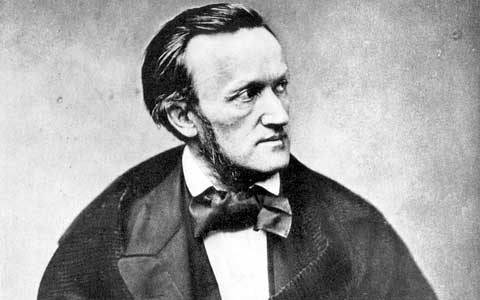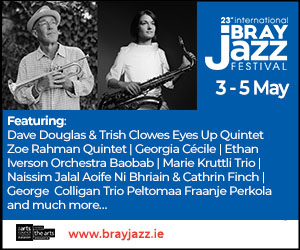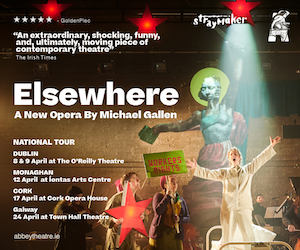
Wagner, Inc.
In a masterful self-promotional effort that began in his twenties and lasted for the remainder of his career, Richard Wagner managed to develop himself into a ‘brand’ – a name, look, ideology and product that continues today. Nicholas Vazsonyi examines the innovative ways in which the composer achieved this, using every means available.
Among the great composers of the Western classical tradition, Richard Wagner (1813–1883) belongs to a category of his own. Admittedly, every significant composer stands out in their own way – each comes with their distinct sound, their legendary story and an identifiable image handed down to us – but even so, the case of Wagner is different. Mention his name, and you’ll get some kind of passionate reaction: love or hate, but rarely a shrug of the shoulders. Why? His music and his dramas, it is true, demand a lot, both emotionally and in terms of time. He also expressed views that demand a reaction, either enthusiastic support or horrified rejection. This was already the case in his own day, and it has not abated. But it is precisely this enduring quality of controversy, scandal and passionate engagement – in short, the relentless noise surrounding Wagner – that intrigues me.
Yes, he was a notorious anti-Semite, but so were many of his contemporaries, including famous composers like Chopin and Schumann. So why was it Wagner whose music and ideas captivated Hitler, perhaps even being a factor in the conception and execution of the Holocaust? Yes, there are many summer music festivals that take place annually, but there is only one devoted solely to the works of a single composer (Wagner), an essentially unbroken tradition, stretching back more than a century, and today with a waiting list for tickets that by all accounts stretches to ten years or more. Yes, there are Bach, Mozart, and Beethoven societies, but the Wagner Society concept was approved and supported by Wagner himself as a way of funding that festival, a role the societies continue to maintain by guaranteeing an audience.
It is almost as if, beyond the fans, there was a Wagner industry comprised of performers, academics, journalists, recording companies, theatrical entrepreneurs, not to mention Wagner’s many descendants, all making a living off the Wagner name, some of them exclusively so: people all invested in keeping the noise surrounding that name alive.
In thinking about the ‘Wagner industry’ (for want of a better term), from its inception to the present, we have to ask what Wagner himself might have done to get all this started. Did he somehow market himself and, if he did, what did he do, how did he do it, and what bearing has it had on the reception of his works and his music today?
Delving into his life, one is quickly overwhelmed by the sheer quantity and variety of activities Wagner engaged in to promote himself, his ideas and his works. The more one studies, the more one realises that it was Wagner who had been and who continues to be the motor behind the ongoing publicity and ‘noise’ that surrounds his name. Quite astonishingly, he had done nothing less than make himself into something of a ‘brand’. His achievement reveals a lot, not only about Wagner, but also about modernity and our lingering assumptions about the relationship between art and the marketplace.
Wagner, it is true, was not the first composer to market himself. Composers even a century or two earlier were attentive to their careers through securing commissions and positions. Nevertheless, the music scene from the nineteenth century on was transformed by the reduction of aristocratic and ecclesiastical patronage, the increase in public concerts, and the advent of a domestic music market fueled by the new importance of music-making in middle-class households. The introduction of state and corporate funding (a form of latter-day patronage), not to mention the development of recording and electronic technologies completed the transformation. In order to survive and thrive, composers increasingly needed to negotiate this sometimes bewildering and unpredictable market. Back in the nineteenth century, as all this was just starting, many composers were quick to adapt. Some, like Weber, Berlioz and Schumann started to write copiously about music. Beyond communicating verbally about their non-verbal art, the act of writing and publishing itself was a way to establish and maintain a presence in the media – a form of advertisement. Similarly, others, like the hugely successful Giacomo Meyerbeer, worked more directly to engineer their fame and success, placing preview ads in newspapers, delaying the premieres of their works to build up expectation, and even paying so-called claqueures to attend performances and cheer at prescribed moments. Then, there were the famous virtuosos, like the young Franz Liszt and Niccolò Paganini who, in addition to deft publicity campaigns, dazzled their audiences with unprecedented showmanship and technical skill.
All this was well under way when Richard Wagner, then twenty-seven, began to launch his own career in earnest. It was around 1840. Wagner had made his way to Paris, the world’s opera capital, where musicians like Liszt and Meyerbeer had already established themselves with tremendous success. Admittedly, Meyerbeer’s publicity panache, as well as his sure-fire hits which catered to audience tastes, cost him dearly in the estimation of those critics who were concerned with ‘serious’ music. The ‘serious’ artist, so the argument went, was committed solely to the artwork itself, interested neither in financial gain, nor in winning audience approval (the two are of course related).
Surprisingly perhaps, at the time, Meyerbeer – the German-Jewish composer and undisputed opera king – was Wagner’s role model. Wagner made no secret of the fact that he was interested in fame, fortune and success, that he was willing to do anything to attain them, even, as he wrote in a letter to his friend Theodor Apel in October 1834, to ‘write a French opera for the French’ and thereby ‘no longer be a German Philistine’. An amazing confession, if we consider that Wagner would eventually come to embody the exact opposite, i.e. be ‘the most German’ of German composers, a thought penned by Wagner himself in September 1865 and later echoed by the Nazi propaganda minister, Joseph Goebbels.
The makeover took place in Paris, where Wagner failed to get his grand opera Rienzi performed, becoming almost destitute as he waited in vain for the breakthrough. To make ends meet, he took on odd jobs, writing for journals and newspapers about the Paris music scene, especially for readers back home in Germany. It was then that he began to transform himself into the Wagner we know today: the unabashedly pro-German, anti-cosmopolitan, anti-capitalist, anti-Semite. He turned against everything that Paris stood for, and especially against the German Jews who had gone there to make their fortune, and had succeeded where he had not. His new-found Germanness was multi-faceted. Instead of Meyerbeer, Beethoven became his role model. Instead of composing hits to earn fame and fortune, Wagner became devoted to an idea of the pure stage work that would transform mankind and save the world. Such genuineness, he argued, had always been central to the German character, the German relationship to music being selfless, deep and thus true. The Nazi appropriation of Wagner in the 1930s is simply witness to the effectiveness with which he made his name and work synonymous with Germanness.
But there is a twist. After Wagner made himself the embodiment of the pure German artist, he went about marketing this image with all the verve and creativity of those whom he otherwise despised. Arguably he even outdid them with his comprehensive and unrelenting self-marketing campaign. He adapted existing techniques and strategies and made them totally self-serving. While his contemporaries like Schumann and Berlioz wrote about music in general, Wagner wrote almost exclusively about his own, enough to fill ten volumes of collected works, expanded to sixteen after his death. He penned his first autobiography at age thirty and then wrote additional ones approximately every ten years. A tireless correspondent, his letters often entail a careful presentation of his image. In time, he surely suspected that these letters would become part of the public record. Even his anti-Semitism was put in the service of destroying the competition (i.e. Meyerbeer).
He didn’t stop there. He was not writing ‘operas’ anymore, he claimed, but something conceptually new. He never settled on a satisfactory label for this new product –Gesamtkunstwerk, music drama, ‘stage festival play’ are just some of the ones used. Importantly, these terms in the first place conjure up an association specifically with Wagner. This is in part why I suggest he became a ‘brand’. Wagner – the name, the look, the ideology, the product; all facets of his brand, occupying a distinct place in the market, not comparable with anything else. It all comes together annually at the Bayreuth festival, an operatic Disneyland, where Wagner is for sale the moment one exits the train – under the shadow of his purpose-built festival theatre – and starts walking down the town’s streets. Not unlike Disney, who built his own wonderland, Wagner took possession of Bayreuth after 1872, effectively erased its previous history, and made the town synonymous with his name and project. The launching of the festival in 1876 was an event that entailed at least four years of pre-publicity, billed both as a German national event and as the musical event of the century.
What does Wagner’s story tell us more broadly? It reminds us, again, of the market’s pervasiveness in modernity. That even a project like Wagner’s that inherently seeks to deny the market, or at least to oppose it, nevertheless must adhere to its imperatives in order to succeed. We like to think of great art as occupying some pristine, pure place, undirtied or at least unencumbered by money and commerce. But this is a myth, or better yet, a declaration of faith in a religious object, sustained precisely by creators like Wagner investing in the notion of their own divinity. It is a religious view of art and the artist that endures even today, despite, or perhaps because of, the victory of commercialisation. This is why some people bristle at the suggestion that Wagner made himself into a brand, as if such a claim diminishes the significance and magnificence of his music dramas. But such a reaction merely perpetuates the myth, accepts Wagner’s duplicitous campaign to deny his own self-marketing endeavors, and plays into his rationale for the disparagement of Meyerbeer.
On the contrary, Wagner’s tremendous accomplishment is that he maintained the highest level of artistry while also having the energy, ambition, inventiveness and determination to establish a public image that, for better and worse, continues to exert its hold a century and a half later.
Published on 1 April 2010















